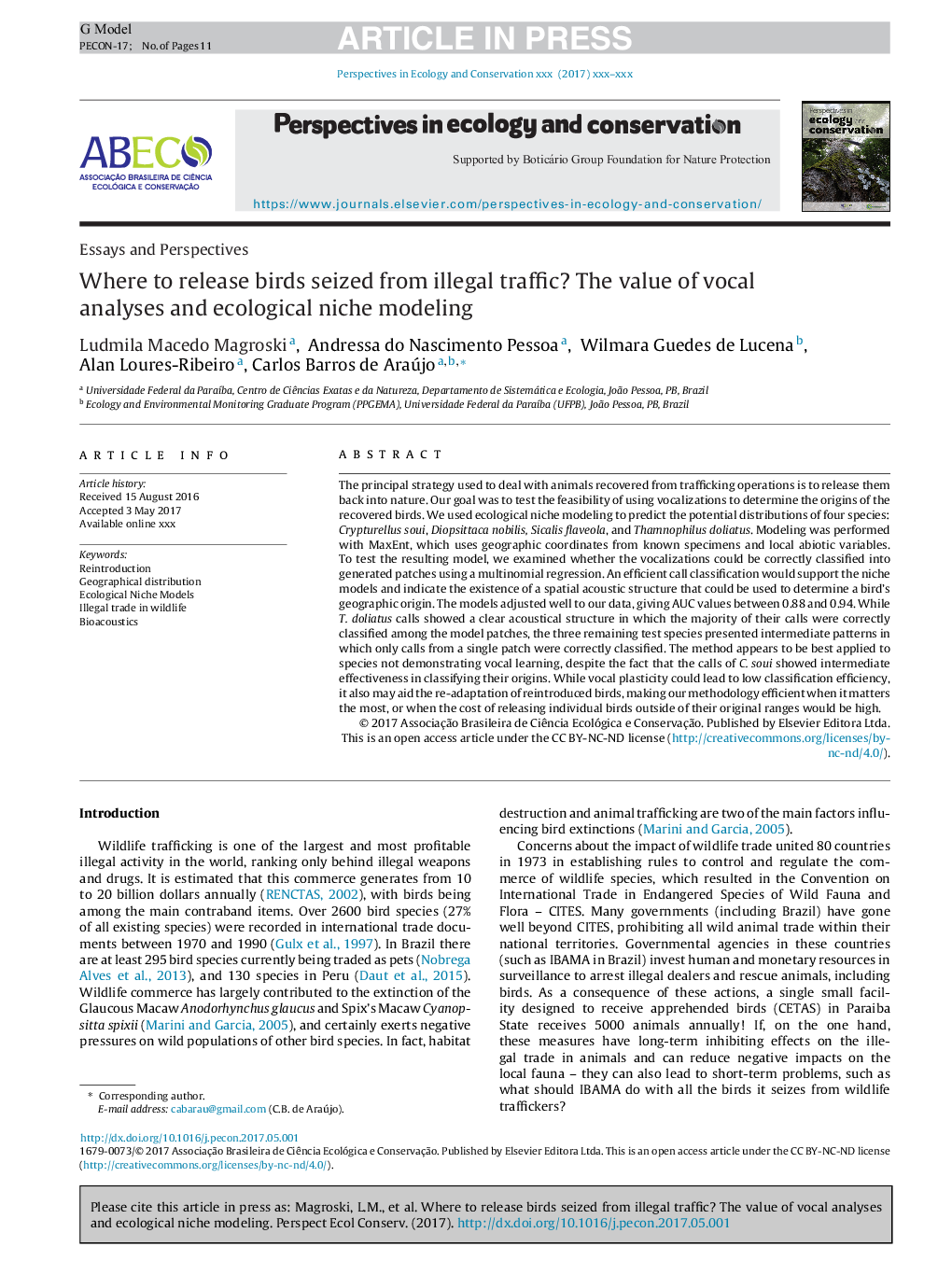| Article ID | Journal | Published Year | Pages | File Type |
|---|---|---|---|---|
| 8920091 | Perspectives in Ecology and Conservation | 2017 | 11 Pages |
Abstract
The principal strategy used to deal with animals recovered from trafficking operations is to release them back into nature. Our goal was to test the feasibility of using vocalizations to determine the origins of the recovered birds. We used ecological niche modeling to predict the potential distributions of four species: Crypturellus soui, Diopsittaca nobilis, Sicalis flaveola, and Thamnophilus doliatus. Modeling was performed with MaxEnt, which uses geographic coordinates from known specimens and local abiotic variables. To test the resulting model, we examined whether the vocalizations could be correctly classified into generated patches using a multinomial regression. An efficient call classification would support the niche models and indicate the existence of a spatial acoustic structure that could be used to determine a bird's geographic origin. The models adjusted well to our data, giving AUC values between 0.88 and 0.94. While T. doliatus calls showed a clear acoustical structure in which the majority of their calls were correctly classified among the model patches, the three remaining test species presented intermediate patterns in which only calls from a single patch were correctly classified. The method appears to be best applied to species not demonstrating vocal learning, despite the fact that the calls of C. soui showed intermediate effectiveness in classifying their origins. While vocal plasticity could lead to low classification efficiency, it also may aid the re-adaptation of reintroduced birds, making our methodology efficient when it matters the most, or when the cost of releasing individual birds outside of their original ranges would be high.
Related Topics
Life Sciences
Agricultural and Biological Sciences
Ecology, Evolution, Behavior and Systematics
Authors
Ludmila Macedo Magroski, Andressa do Nascimento Pessoa, Wilmara Guedes de Lucena, Alan Loures-Ribeiro, Carlos Barros de Araújo,
